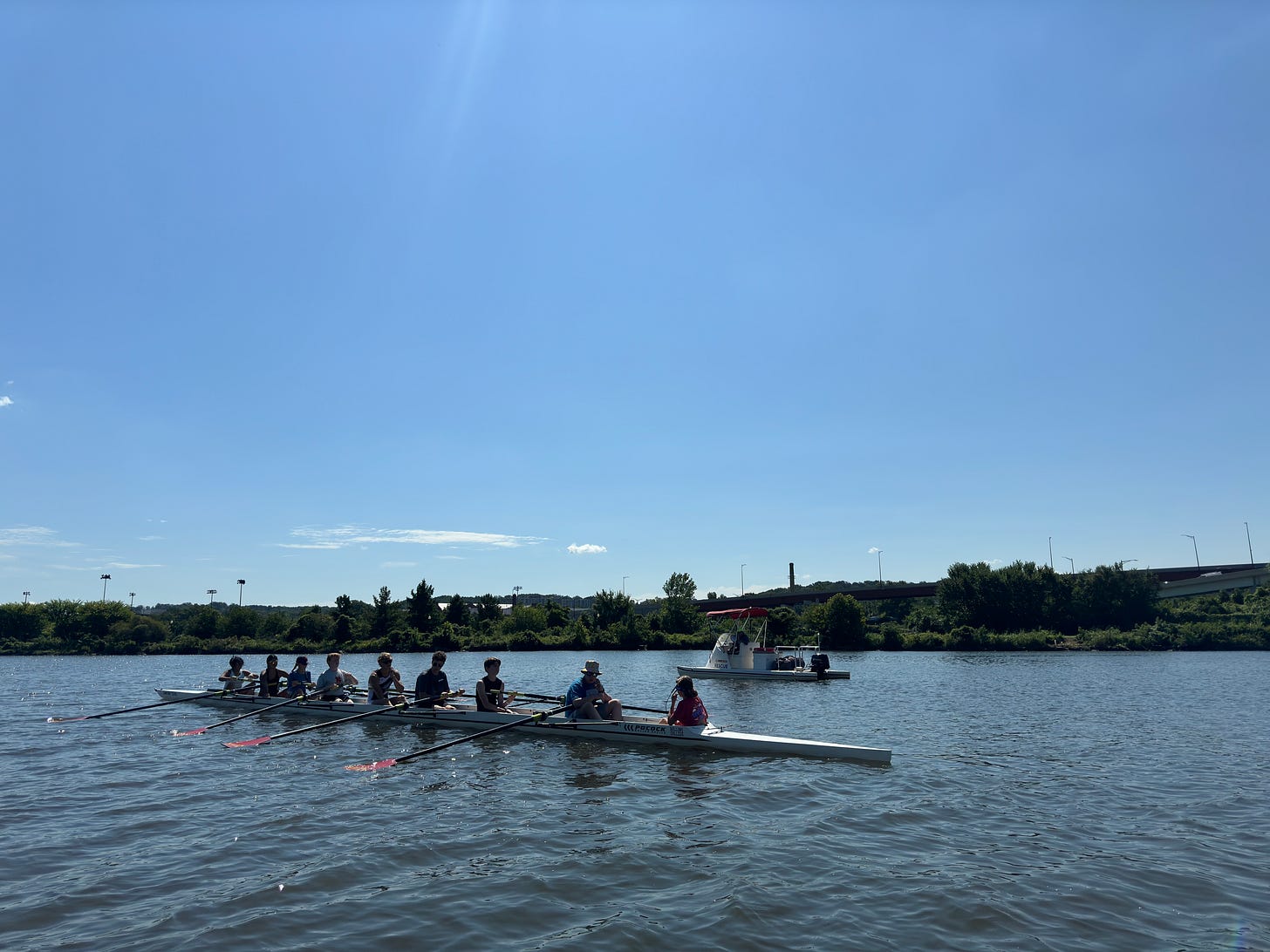Rowing 101: A Beginner's Guide to Joining the Sport
Whether you’re looking for a new fitness challenge, a competitive team experience, or just a way to get out on the water, rowing offers something for everyone. For beginners, stepping into the world of rowing can feel overwhelming. Understanding the fundamentals, the equipment and the training process can help make the transition to the sport smoother and more enjoyable.
Types of Rowing
Rowing is divided into two main categories: sweep rowing and sculling. In sweep, each athlete holds one oar with both hands, and boats come in pairs (two people), fours, (four people), or eights, often with a coxswain to steer and provide commands.
Sculling involves each rower using two oars and can be done in singles (one person), doubles (two people), or quads (four people). Beginners often start in bigger, more stable boats before progressing to streamlined shells designed for speed and efficiency.
Learning Basic Techniques
Before hitting the water, new rowers typically spend time learning basic techniques on land. The rowing machine helps athletes develop the four basic components of the stroke: the catch, drive, finish and recovery. Coaches emphasize posture, proper sequencing and efficient movement to build strong habits before transitioning to a boat. Strength and conditioning exercises may also be incorporated to develop endurance and prevent injury.
If there’s time and space, some coaches may even help new rowers get acquainted with the equipment prior to getting on the water. All the new equipment comes with new names and even orientations to get used to (port and starboard vs. right and left). Figuring out the logistics on land before adding the layer of experiencing the boat prevents getting overwhelmed, and also helps new rowers retain the influx of information faster.
Understanding Rowing Equipment
Understanding equipment is essential for new rowers. The shells vary in size and design depending on the type of rowing and the number of rowers. Oars are carefully sized to match the boat and the rower’s needs. Rowing also requires specific clothing - tight fitting apparel to prevent interference with movement and getting stuck in the seat tracks. Safety on the water is paramount, so new rowers also learn about weather conditions, traffic patterns and all emergency procedures before they begin regular training sessions.
The Importance of Teamwork
Teamwork is at the heart of rowing. Whether in an eight or training individually, rowers must develop coordination, discipline and resilience. Success in rowing isn’t just about strength; it’s about being in time with your teammates, responding to the coxswain’s calls and maintaining complete focus throughout practice and competition. Communication and trust between teammates are vital and a positive attitude and willingness to learn go a long way in an athlete’s development.
Getting Started in Rowing
For those looking to join the sport, there are many options available. Local rowing clubs, high school and college teams and community programs provide a wide range of opportunities for beginners to get started. Many clubs and boathouse facilities offer learn to row programs that introduce new athletes to the basics in a supportive environment. As skills improve, rowers can choose to compete in races, known as regattas, which range from short sprints in the spring, to long distance endurance events in the fall.
Why Rowing is a Lifelong Sport
Rowing is a rewarding sport that challenges both the body and mind. While it requires patience and dedication to master, the benefits - improved fitness, teamwork and a deep connection with the water - make it an experience worth pursuing. For beginners willing to embrace the learning process, rowing can become a lifelong passion and an opportunity to push both personal and athletic boundaries.
The Flat Water Bulletin team





